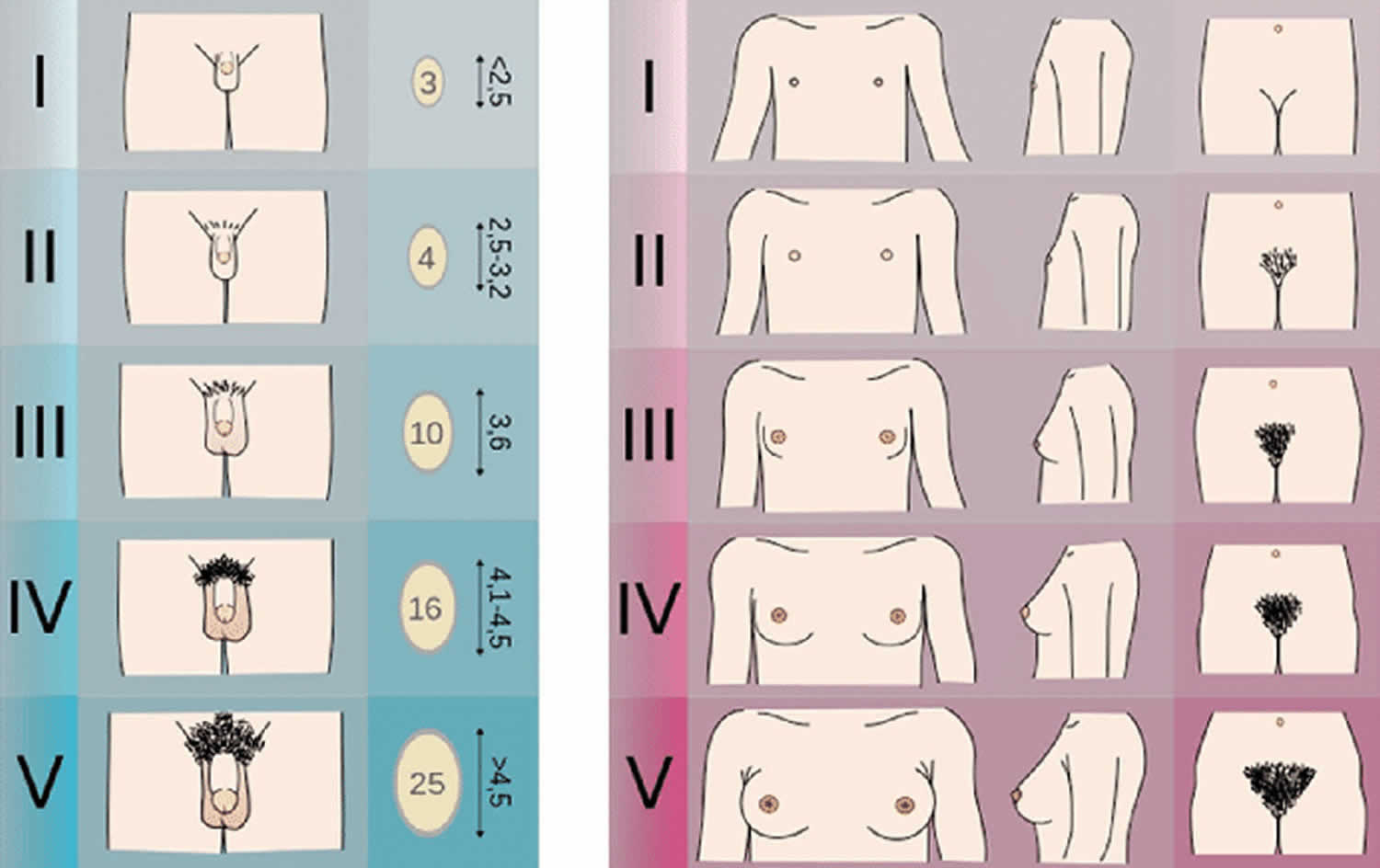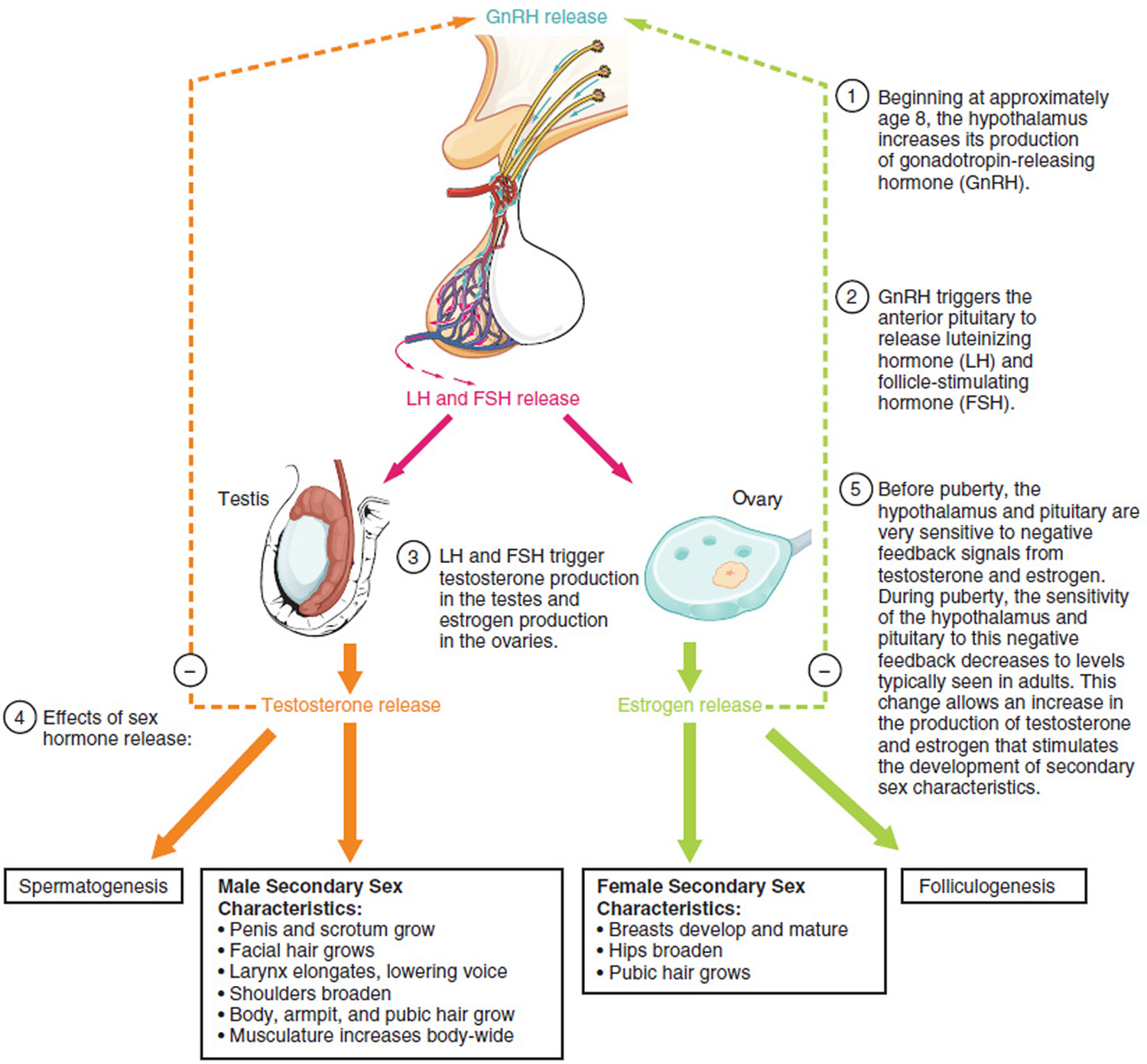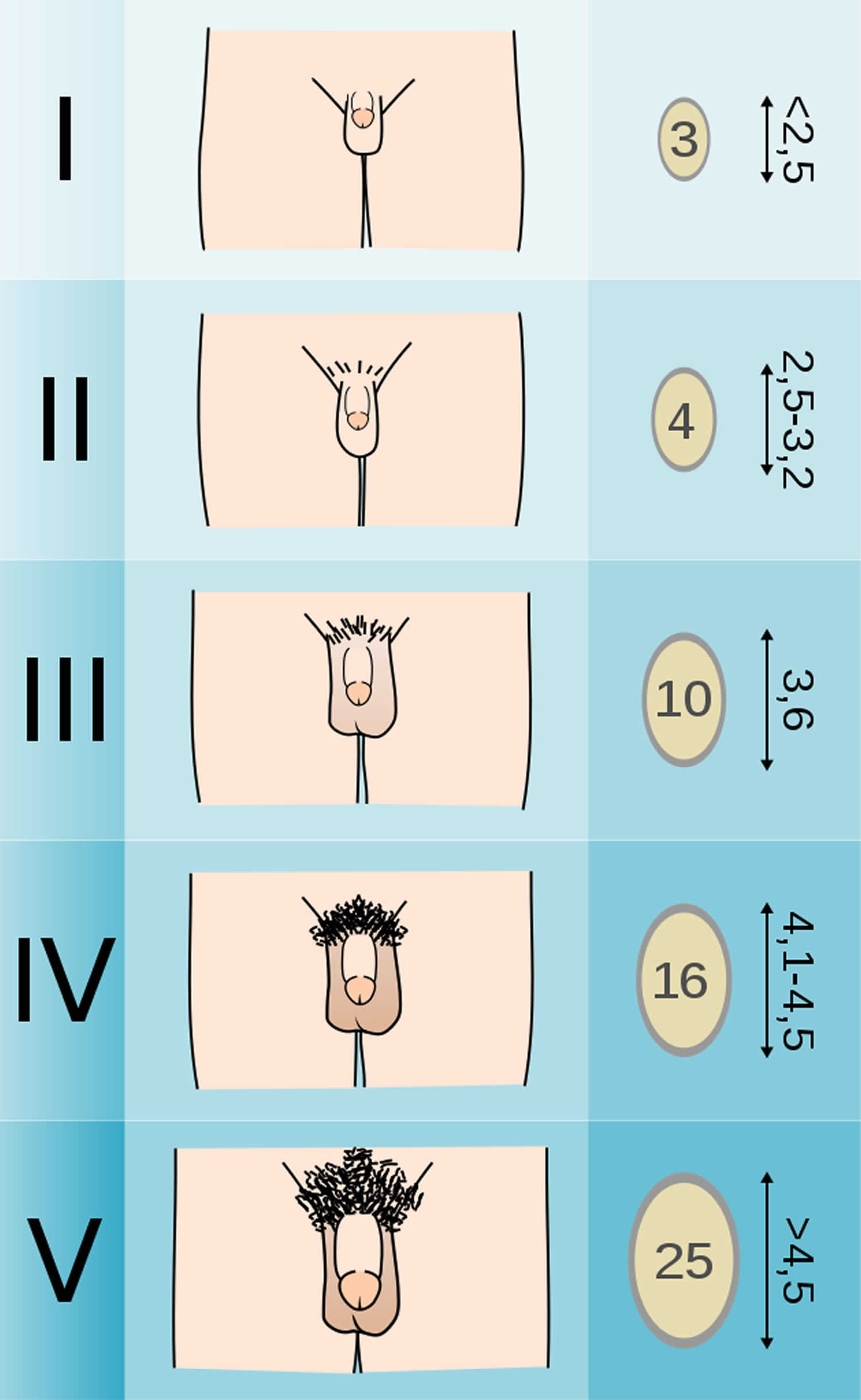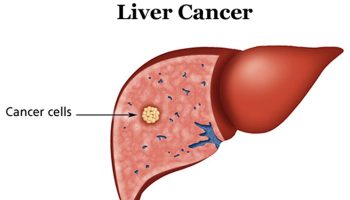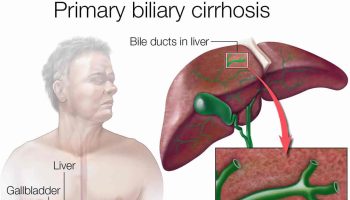Tanner scale
Tanner scale better known as Tanner Stages or Sexual Maturity Rating, is an objective classification system that doctors use to document and track the development and sequence of secondary sex characteristics of children during puberty 1. Tanner puberty scale was developed by Marshall and Tanner while conducting a longitudinal study during the 1940s-1960s in England. Based on observational data, they developed separate scales for the development of external genitalia: phallus, scrotum, and testes volume in males; breasts in females; and pubic hair in both males and females.
Tanner Stages are utilized in pediatric and adolescent practice to counsel patients about the timing of anticipated body changes, perform appropriate medical screenings, and monitor for deviations in normal timing and sequence of physical signs of puberty that may represent physiologic problems. Changes that are associated with, but not directly measured by, Tanner Staging, include bone growth and fusion, body composition and linear growth, and hematocrit values. Tanner Staging, rather than chronological age, should be used in assessing pubertal development. Clinical examples of use include delivering timely anticipatory guidance on menstrual hygiene needs (menarche occurs about 2 years post-thelarche/Tanner 2 breasts) or targeting scoliosis exams at well-visits before and during peak height velocity (Tanner 2 to 3, depending on sex) 2.
In females, the normal onset of puberty ranges from 8 to 13 years old, averaging age 10 years in White Americans and age 8.9 years in African-Americans 1. Tanner Stage one is prepubertal females. They will have no breast tissue or pubic hair. Puberty in females begins with the development of breast buds under the areola, also known as thelarche, and and the sparse presence of pubic hair, which represents entry into Tanner Stage 2 3. Female typically experience their ‘growth spurt’ during Tanner stage two 4. As puberty progresses, the glandular tissue of the breast increases in size and changes in contour. In females, thelarche is followed in 1 to 1.5 years by the onset of sexual hair (pubic and axillary), known as pubarche. Continued breast and areola enlargement without distinct separation of the contour and darkening pubic hair along the mons pubis is known as Tanner stage 3. Tanner Stage 4 is classified when a secondary mound above the breast forms and the pubic hair thickens but is not on the thigh. Menarche, the onset of menses, arrives on average at age 12.5 years, regardless of ethnicity, following thelarche on average by 2.5 years (range 0.5-3 years). Menarche occurs in Tanner stage three or four. Between Tanner Stage 2 and 3 breast development, females experience peak height velocity. African-American females have closer to 3 years between their thelarche and menarche, accounting for greater height potential. Tanner Stage five is the adult female body. It is when the nipple projects out of the areola and the pubic hairs reach the medial thigh 5.
In males, the onset of puberty ranges from 9 to 14 years of age. The first secondary sexual characteristic visible is gonadarche, when testicular volume reaches greater than or equal to 4 mL (or long axis greater than or equal to 2.5 cm) and enters Tanner stage 2. During Tanner Stage 3 genital development, males undergo peak height velocity. Spermarche, the counterpart of menarche in females, is the development of sperm in males and typically occurs during genital Tanner Stage 4.
Precocious puberty is defined as the onset of Tanner 2 secondary sexual characteristics before age 8 years in females or age 9 years in males if continued progression of pubertal development occurs in close follow-up. Delayed puberty should be considered if females have not reached Tanner 2 thelarche by age 13 years old, or if males have not reached Tanner 2 gonadarche by age 14 years. Primary amenorrhea is defined as failure to start menses within 3 years of Tanner Stage 2 (thelarche) or by age 15 years. It is important to note that some males will temporarily develop glandular breast tissue (pubertal gynecomastia) between genital tanner stage 3 and 4, which may be emotionally troubling but not physically harmful. Abnormalities may be caused by idiopathic conditions, nutritional deficiencies 6, hypothalamic–pituitary–gonadal axis variations, or neoplastic and genetic disorders.
Figure 1. Normal puberty
Tanner puberty scale
Below are the Tanner Stages described in detail for clinical reference. For all three sites of development, Tanner Stage 1 corresponds to the pre-pubertal form with progression to Tanner Stage 5, the final adult form. Breast and genital staging, as well as other physical markers of puberty such as height velocity, should be relied on more than pubic hair staging to assess pubertal development because of the independent maturation of adrenal axis.
Pubic hair scale (both males and females)
- Stage 1: No hair
- Stage 2: Downy hair
- Stage 3: Scant terminal hair
- Stage 4: Terminal hair that fills the entire triangle overlying the pubic region
- Stage 5: Terminal hair that extends beyond the inguinal crease onto the thigh
Female breast development scale
- Stage 1: No glandular breast tissue palpable
- Stage 2: Breast bud palpable under areola (1st pubertal sign in females)
- Stage 3: Breast tissue palpable outside areola; no areolar development
- Stage 4: Areola elevated above contour of the breast, forming “double scoop” appearance
- Stage 5: Areolar mound recedes back into single breast contour with areolar hyperpigmentation, papillae development and nipple protrusion
Male external genitalia scale
- Stage 1: Testicular volume < 4 ml or long axis < 2.5 cm
- Stage 2: 4 ml-8 ml (or 2.5-3.3 cm long), 1st pubertal sign in males
- Stage 3: 9 ml-12 ml (or 3.4-4.0 cm long)
- Stage 4: 15-20 ml (or 4.1-4.5 cm long)
- Stage 5: > 20 ml (or > 4.5 cm long)
Figure 2. Tanner scale male
Figure 3. Tanner scale female
- Emmanuel M, Bokor BR. Tanner Stages. [Updated 2019 May 13]. In: StatPearls [Internet]. Treasure Island (FL): StatPearls Publishing; 2019 Jan-. Available from: https://www.ncbi.nlm.nih.gov/books/NBK470280[↩][↩]
- Sotos JF, Tokar NJ. Appraisal of testicular volumes: volumes matching ultrasound values referenced to stages of genital development. Int J Pediatr Endocrinol. 2017;2017:7.[↩]
- Beckman DA, Feuston M. Landmarks in the development of the female reproductive system. Birth Defects Res. B Dev. Reprod. Toxicol. 2003 Apr;68(2):137-43.[↩]
- Snyder CK. Puberty: An Overview for Pediatric Nurses. J Pediatr Nurs. 2016 Nov – Dec;31(6):757-759.[↩]
- Slough JM, Hennrikus W, Chang Y. Reliability of Tanner staging performed by orthopedic sports medicine surgeons. Med Sci Sports Exerc. 2013 Jul;45(7):1229-34.[↩]
- Zemel B. Bone mineral accretion and its relationship to growth, sexual maturation and body composition during childhood and adolescence. World Rev Nutr Diet. 2013;106:39-45.[↩]
